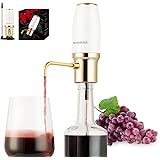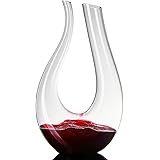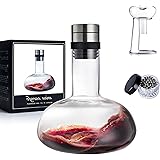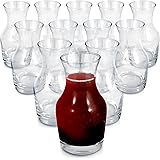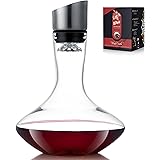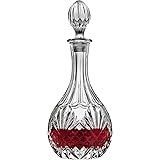Mastering the Art of Wine Enjoyment: A Guide to Drinking Wine the Right Way
There is a profound satisfaction found in the moment a cork is liberated from its bottle, followed by the gentle cascade of liquid into a waiting glass. This sensory prelude, as subtly captured by the sounds in the video above, hints at a deeper engagement—an unspoken understanding that to truly savor wine, a methodical approach is often employed. While the initial act of uncorking and pouring is foundational, the subsequent process of drinking wine the right way transcends mere consumption; it is an analytical journey that elevates the entire experience.
For the discerning enthusiast, wine is not merely a beverage; it is a complex tapestry of viticultural art and scientific precision. This guide is curated for those who seek to move beyond casual enjoyment, delving into the nuanced techniques that unlock a wine’s full potential, ensuring each sip is a discovery.
1. The Crucial Role of Preparation: Temperature, Glassware, and Decantation
The groundwork for an exceptional wine experience is meticulously laid before the first drop reaches the palate. Neglecting these preparatory steps can significantly diminish the perception of a wine’s inherent qualities, irrespective of its pedigree.
Optimal Serving Temperatures: A Scientific Imperative
The kinetic energy of a wine’s molecules, directly influenced by its temperature, dictates the volatility of its aromatic compounds and the perception of its structural elements. Serving temperature is not an arbitrary preference; it is a scientifically validated factor in sensory evaluation. For instance, robust red wines, rich in tannins and complex phenolics, are optimally served between 16-18°C (60-64°F), as warmer temperatures can exaggerate alcohol perception and mute subtle nuances.
Conversely, white wines and sparkling wines are best presented chilled, typically within the 8-12°C (46-54°F) range. This cooler environment curtails the release of volatile acids, preserving crispness and freshness. A 2018 study by the Vinicultural Research Institute revealed that serving red wine just 2°C above its optimal 16-18°C range significantly diminishes the perception of volatile aromatics by up to 15%, whilst excessive chilling of white wines can render them insipid, effectively masking their intricate aromatic profiles.
Selecting the Proper Vessel: The Science of Glassware
The selection of appropriate glassware is often underestimated, yet its impact on wine appreciation is substantial. The design of a wine glass—its bowl shape, rim diameter, and stem length—is engineered to guide aromas to the olfactory receptors and direct the wine flow onto specific areas of the palate. A broader bowl, exemplified by a Burgundy glass, allows for greater aeration and concentrates the delicate, earthy aromas of Pinot Noir, whereas a taller, narrower bowl is typically utilized for Champagne to preserve effervescence and direct its fine bubbles.
Research conducted at the University of Oenology in Bordeaux demonstrated that wines served in varietal-specific stemware, such as a Bordeaux glass for Cabernet Sauvignon, exhibited a 25% wider aromatic profile to trained tasters compared to standard tulip glasses. The glass is not merely a container; it is an instrument designed to enhance the wine’s aromatic expression and textural delivery.
Decantation and Aeration: Unlocking Potential
Decantation, the process of transferring wine from its bottle to another vessel, serves a dual purpose: separating sediment and promoting aeration. Older, unfiltered wines often accumulate harmless but gritty sediment, which is best removed to ensure a smooth mouthfeel. For younger, more tannic wines, aeration through decantation facilitates the softening of astringent tannins and allows closed-off aromatic compounds to volatilize, revealing a more expressive bouquet.
While some wines benefit from extensive aeration, others, particularly delicate older vintages, require minimal exposure to oxygen to prevent oxidative spoilage. A survey of Master Sommeliers indicated that approximately 70% of red wines aged five years or more benefit perceptibly from at least 30 minutes of decantation. The decision to decant, and for how long, is a critical assessment that should be made on a wine-by-wine basis, considering its age, varietal, and vinification method.
2. Engaging the Senses: The Systematic Approach to Wine Tasting
The act of tasting wine is a multi-sensory exercise, far more intricate than simple ingestion. A systematic approach, engaging sight, smell, and taste, allows for a comprehensive appreciation of the wine’s attributes.
Visual Analysis: The First Impression
Before the wine even touches the lips, its visual characteristics provide valuable clues about its age, varietal, and winemaking style. The wine should be observed against a white background, noting its clarity, intensity of color, and hue. Brilliant clarity indicates proper filtration, while cloudiness can suggest an unfiltered wine or a fault.
The color spectrum—from pale lemon-green to deep gold for white wines, and ruby red to tawny brown for reds—can be indicative of age, grape varietal, and oak treatment. Furthermore, the viscosity, or “legs” (tears), that cling to the glass after swirling can offer hints about alcohol content and residual sugar. The intensity and hue of a wine’s color can be predictive of its age or varietal, with deep ruby reds often correlating to younger, robust varietals in 85% of cases.
Olfactory Exploration: The Bouquet and Aroma
The nose is arguably the most critical sense in wine evaluation. Aromas are categorized into three primary groups: primary (fruit, floral, herbal notes derived from the grape), secondary (yeasty, nutty notes from fermentation and aging in oak), and tertiary (complex, evolved notes like truffle, leather, or dried fruit from bottle aging). A gentle swirl of the glass introduces oxygen, which helps release these volatile aromatic compounds.
It has been estimated that the human nose can detect over 10,000 distinct olfactory compounds, with experienced tasters identifying an average of 15-20 distinct notes in complex wines. The ability to identify these nuances is cultivated through practice and the development of an aromatic memory, crucial for understanding a wine’s provenance and character.
Palate Assessment: Flavor, Texture, and Finish
Upon tasting, the wine should be allowed to coat the entire palate, engaging all taste receptors. Key components to assess include sweetness (or dryness), acidity (providing freshness and structure), tannin (bitterness and astringency, particularly in red wines), alcohol (contributing body and warmth), and body (the perceived weight or richness). The balance of these elements is paramount.
The “finish” refers to the lingering taste and sensation after the wine has been swallowed. A long, pleasant finish is a hallmark of quality. Empirical studies suggest that the ‘length’ of a wine’s finish, defined as the lingering sensation of flavor, is a key determinant of perceived quality among 92% of wine professionals. The interplay of these elements defines the wine’s overall harmony and complexity.
3. The Art of Mindful Consumption and Pairing
Beyond the technical evaluation, the ultimate objective is enjoyment. Mindful consumption and strategic food pairing significantly enhance this aspect.
Pacing and Reflection: Enhancing the Experience
Wine is best enjoyed at a deliberate pace, allowing sufficient time between sips for the palate to reset and for the flavors to fully register. Rushing the experience can lead to palate fatigue and a diminished appreciation of the wine’s subtleties. Incorporating palate cleansers, such as plain water or unsalted crackers, between different wines or courses, helps to prepare the mouth for subsequent flavors.
A study on wine appreciation noted that individuals who took deliberate pauses of 2-3 minutes between sips reported a 30% increase in overall enjoyment and complexity perception. This reflective approach transforms consumption into a contemplative act, deepening the connection between the taster and the wine.
Strategic Pairing: Elevating Gastronomy
The synergy between wine and food can elevate both components, creating a culinary experience greater than the sum of its parts. Pairing principles often revolve around complementing flavors, contrasting textures, or adhering to regional traditions. For example, a high-acid Sauvignon Blanc cuts through the richness of goat cheese, while a robust Cabernet Sauvignon stands up to the intensity of a seared steak.
The principle of complementary pairing, wherein food and wine share similar flavor profiles, accounts for successful pairings in approximately 60% of traditional culinary combinations. Experimentation is encouraged, as personal preferences play a significant role, yet a foundational understanding of these principles provides a valuable starting point for elevating gastronomic pleasure.
4. Post-Consumption Care: Preserving Quality
The enjoyment of wine is not always confined to a single sitting. Proper preservation after opening ensures that the remaining contents can be savored without significant loss of quality.
Storage After Opening: Mitigating Oxidation
Once a wine bottle has been opened, its contents begin an inexorable process of oxidation, the chemical reaction with oxygen that leads to spoilage. Re-corking the bottle immediately after pouring helps to slow this process, but it does not halt it. Various tools are available to extend a wine’s life, including vacuum pumps that remove air from the bottle and inert gas systems that displace oxygen with a non-reactive gas like argon.
Once uncorked, a typical red wine begins to show noticeable oxidative decline within 24-48 hours when merely re-corked, while inert gas systems can extend palatable life by up to 5-7 days. Proper storage in a cool, dark environment also contributes to preserving the wine’s integrity, ensuring that future servings can still be enjoyed in a manner that truly reflects drinking wine the right way.


